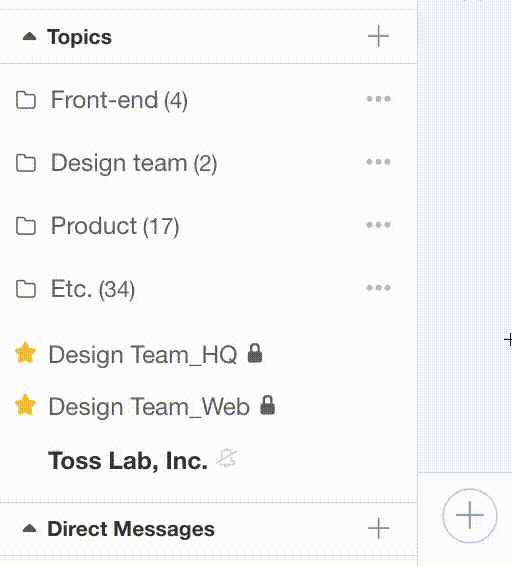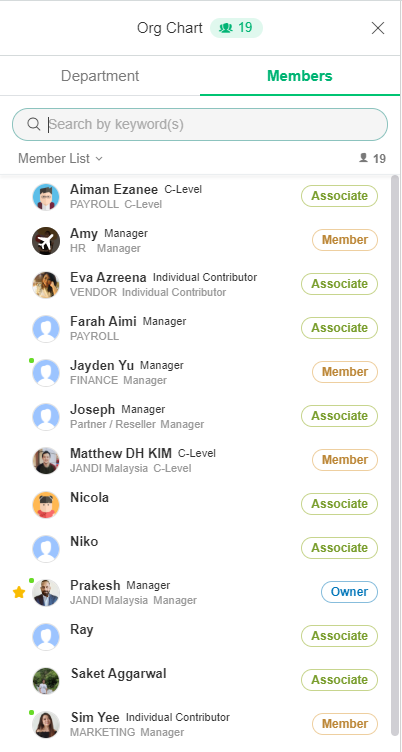5 things nobody tells you about communicating with students and educators online
Most educators would agree that effective communication is important in any successful classroom. But in an online class, the interactions may look very different from the face-to-face experiences that students are used to.
On one hand, students are overwhelmed with too many emails, group assignments, Zoom meetings, and day-to-day remote learning tasks. On the other hand, students may feel isolated or demotivated if the online class provides fewer opportunities to interact with others.
The good news is that several platforms exist to improve the experience of communicating online. Today, it is possible to achieve the same social benefits that you would in a traditional course of studies, such as improved academic performance, exposure to new ideas, and growing professional networks beyond the classroom.
In this blog post, we will introduce the JANDI platform and explain how you can use it to communicate effectively, whether you are an educator or a student. Each of these tips is available for you to visualize in our full video webinar on JANDI for Schools.
How to use JANDI to communicate as an educator or student:
- Set up and manage your workspace
- Conduct all school-related communication in the same place
- Collaborate with people outside your institution
- Prioritize tasks directly from the chat box
- Integrate notifications from all of your apps into one
1. Set up and manage your workspace
Imagine a classroom with no desks, no timetable, and no teacher. How would students know where to sit? When would the lesson start and end? And who would the students turn to for help?
It seems impossible to run a class without answering these essential questions. Yet, it is often what happens in online learning classrooms. To avoid confusion, it is best to set up a shared workspace where all of the information is available and managed on a regular basis.
Tip: Organize all of your topics into folders.
Whether it’s a notification board, a private project discussion, or a regular lunch chat, you can use folders to organize all of your communications. This creates a hierarchy that makes it easier to find relevant topics.
Organizing your topics is as easy as dragging and dropping them into the relevant folders based on their purpose. Here’s an example setup for a Digital Marketing class:
- Main Space
-
- Announcements
- Principles of Digital Marketing
- Marketing Data Analysis 101
- Introduction to Social Media Marketing
- Group Assignments
-
- Group A
- Group B
- Group C
- Common Area
-
- Lunch Chatroom
Tip: Display your most-used schedules
Create a dedicated Google Calendar for your most-used schedules, such as a class timetable, association meeting times, or even regular social events. Then, integrate it into JANDI—this will automatically populate your calendar so that everyone can check the schedule and get notified about upcoming events from within the app.
Tip: Use the organizational chart to reach out to someone directly
In a large faculty, it might be difficult to reach out to a professor or team member whom you have not met. This is when you should use the organizational chart to find the appropriate person and message them directly in JANDI.
Of course, it’s normal to feel nervous about reaching out to someone for the first time. Just be sure to introduce yourself authentically and avoid nuances like sarcasm or irony, as they rarely translate well in online conversations.
2. Conduct all school-related communication in the same place
Online classes miss out on the physical benefits of everyone being in the same place, such as body language, tone of voice, and eye contact. JANDI helps you to make up for it by redesigning your online space for all school-related communication. For example:
Tip: Use just one app to set up live discussions
With Zoom integration, you can schedule live virtual discussions such as seminars, group projects, and even student association meetings. Make the most of a live discussion by notifying attendees ahead of time about the date, agenda, and any pre-reading materials. You can do all of this within the app by messaging the relevant groups and uploading the necessary files in JANDI.
Through JANDI, professors and students are not only ably to have a conversation or communicate in real-time, but the university is also able to provide an extra supplementary Live Lecture for each LMS course on a weekly basis.”
– Professor Hyo Yeon Lee, Social Welfare, Sejong
Cyber University
It is not practical to work on Facebook. I would have to befriend members I am working with and that might expose personal information. At times, messages might end up in the spam inbox or message notifications may be turned off, causing a delay in the workflow.
– TEDxNationalTaiwanUniversity
Tip: Agree on a naming convention for storing and sharing digital files
You can store anything in JANDI—whether it’s an image, a Google Drive file, a zip file, or even an audio or video recording. A good rule of thumb when sharing files is to have an agreed-upon naming convention, such as this one from Princeton university. Otherwise, you may spend a lot of time searching for files.
Tip: Use polls for brainstorming and decision making
Polls are useful in situations where a consensus is needed; this includes brainstorming a list of ideas and choosing the most popular ones, or making decisions as a team. You can start a poll directly in the app and set a cut-off date for responses. JANDI will announce the results in that chat box of your choice once the poll has ended.
3. Collaborate with people outside of your institution
In some classes, you may need to collaborate with people outside of your institution on a temporary basis. For example, international exchange students may join your class as part of a buddy system, or practical assessments may require working with an external client.
Tip: Invite temporary members as ‘associates’
You can extend collaboration outside of your institution using the ‘associate’ role in JANDI. Members with ‘associate’ access can only view items within the topics that they are invited to. That means all of your files and conversations can remain private unless you choose to share them.
Check out the differences between a member and associate access here.
4. Prioritize tasks using a to-do list
Do you spend more time using productivity tools to prioritise tasks, instead of actually being productive? Switching between tools in an online environment can be distracting—and studies have shown that when we’re distracted, it takes nearly 30 minutes to return to the task at hand. “Less is more” in this situation, and you might find it helpful to minimise the number of apps used.
Tip: Create tasks directly from any chat message
Whenever a new request is made in the chat box, you can add it directly to your to-do list as a task.
Once you have created a task, you can customise it by attaching files, assigning more than one person, and setting the completion status.
5. Integrate notifications from all of your apps into one
If you use many tools to communicate online, it can be challenging to stay on top of your notifications. JANDI’s integrations are versatile enough to become your main notification centre. The mobile app can send reminders straight to your phone such as Google Calendar updates, emails, form submissions, JIRA tickets, GitHub, custom RSS feeds, and many more.
Tip: Integrate your most-used apps with JANDI
For example, integrate your Google Calendar with JANDI to receive reminders and updates directly in the app. Simply connect your Google account and choose how often you would like to be notified and whether you would like to receive a summary of your schedule each day.
Conclusion:
When a school or higher education institution transitions from face-to-face learning to online learning, it is not a must to lose out on effective communication. In fact, there are many benefits that can be unlocked by adopting the new online communication methods mentioned in this article.
We understand that the current uncertainty has put an extraordinary amount of pressure on schools to ensure that learning can continue in safe and effective ways. To mitigate the impact of the COVID-19 pandemic on your school communications, we are offering the JANDI platform to schools for free. It comes with 1TB of storage space, full access to 15+ collaborative features, and an unlimited number of users.
Students and educators who submit this form using their JANDI registered email address will gain unlimited access to our platform, and our onboarding team will be assigned to help you get the most out of the platform. We are all in this together—so it is our privilege to be able to help in this way while hoping for better times ahead for all of us.







